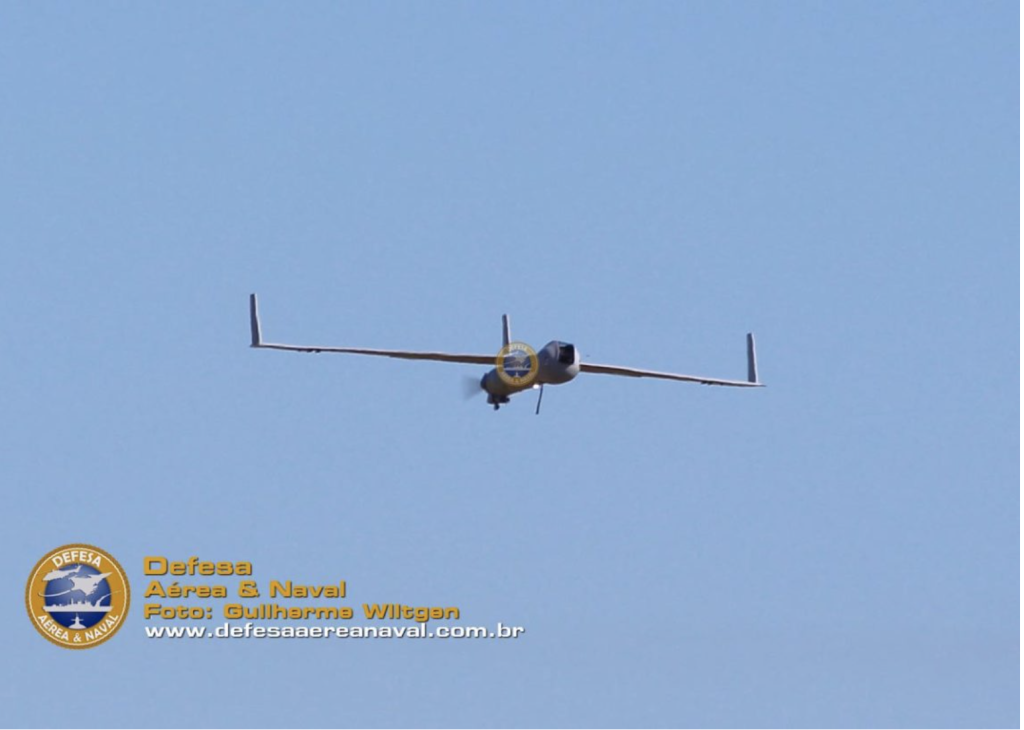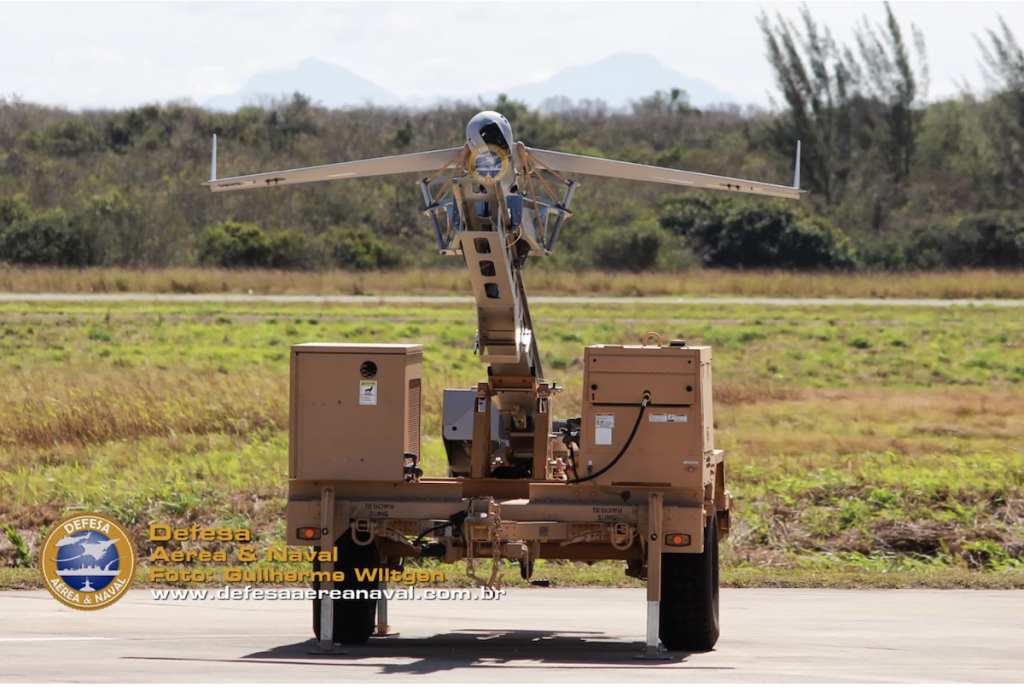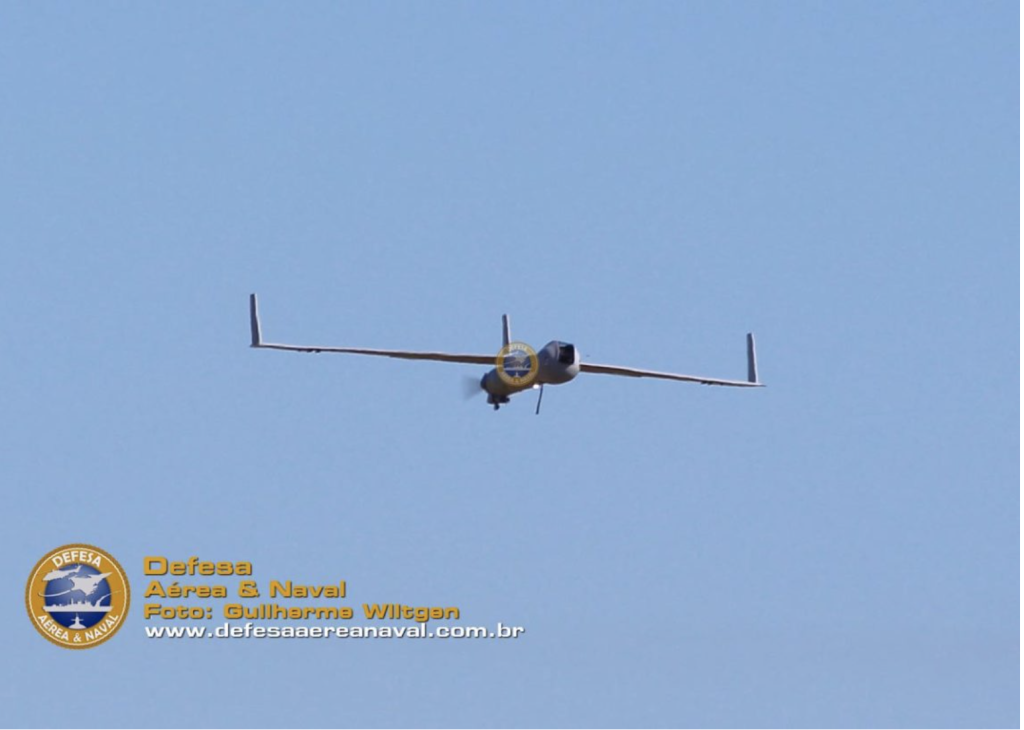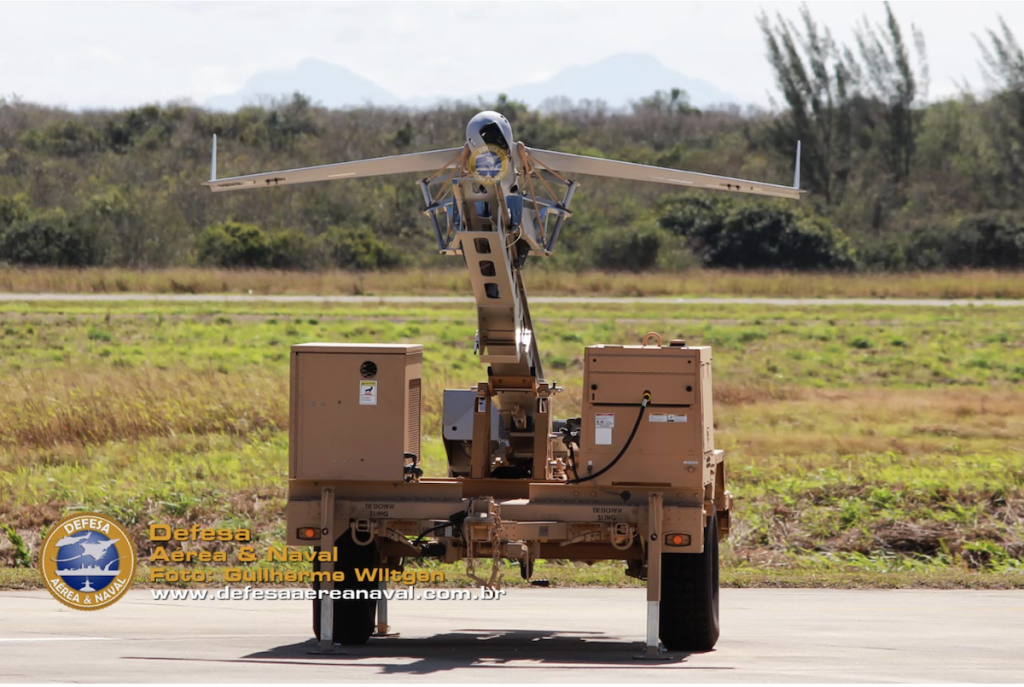
Tropicalex 2023: First operational use of the RQ-1 ScanEagle by the Brazilian Navy
By Guilherme Wiltgen of Defesa Aerea Nával. Translated to English via Google Translate.
During Operation Tropicalex 2023, the Brazilian Navy carried out an unprecedented flight using the Embarked Remotely Piloted Aircraft System (SARP-E) together with the Squadron.
After extensive studies conducted by the Navy Aeronautics Directorate (DAerM), the Insitu ScanEagle was selected and acquired via FMS (Foreign Military Sales) in 2019 and received in Brazil in March 2022.
Designated in MB as RQ-1 ScanEagle, it is operated by the 1st Remotely Piloted Aircraft Squadron (QE-1), which is based at the São Pedro da Aldeia Aeronaval Complex, in Rio de Janeiro.
Unprecedented SARP-E flight with the Squadron
So that SARP-E can be used in Squadron operations, a test flight was carried out with the RQ-1 ScanEagle, which transmitted images in real time to NAM Atlântico (A 140), during Operation Tropicalex.

The flight was carried out from the São Pedro da Aldeia Naval Air Base (BAeNSPA), using the ground launch system and successfully collected after the flight. According to CMG Fabio Nunes, Commander of EsqdQE-1, “The use of the aircraft will increase the clarification capacity for the benefit of the Squadron, due to the characteristics it has, such as 15 hours of autonomy, wide range, AIS sensor and cameras for use day and night.”
The Brazilian Navy acquired six Embedded Remotely Piloted Aircraft Systems (SARP-E) RQ-1 ScanEagle, with registration numbers N-8001 to N-8006, two launchers (one onboard and one on land) and two recovery systems.

Soon, the QE-1 Squadron will reach another important milestone, when it will begin aerial operations aboard one of the Squadron’s ships, embarked on the Ocean Patrol Vessel Apa (P 121), considerably expanding the protection capacity of the Blue Amazon.
Original article here.
Versão em Português:

Por Guilherme Wiltgen
Durante a Operação Tropicalex 2023, a Marinha do Brasil realizou um voo inédito de Sistema de Aeronaves Remotamente Pilotadas Embarcado (SARP-E) junto com a Esquadra.
Após extensos estudos conduzidos pela Diretoria de Aeronáutica da Marinha (DAerM), o Insitu ScanEagle foi selecionado e adquirido via FMS (Foreign Military Sales) em 2019 e recebido no Brasil em Março de 2022.
Designado na MB como RQ-1 ScanEagle, ele é operado pelo 1º Esquadrão de Aeronaves Remotamente Pilotadas (QE-1), que está sediado no Complexo Aeronaval de São Pedro da Aldeia, no Rio de Janeiro.
Voo inédito de SARP-E com a Esquadra
Para que o SARP-E possa ser empregado em operações da Esquadra, foi realizado um voo de teste com o RQ-1 ScanEagle, que transmitiu imagens em tempo real para o NAM Atlântico (A 140), durante a Operação Tropicalex.

O voo foi realizado a partir da Base Aérea Naval de São Pedro da Aldeia (BAeNSPA), utilizando o sistema de lançamento terrestre e recolhido com sucesso após o voo. Segundo o CMG Fabio Nunes, Comandante do EsqdQE-1, “O emprego da aeronave ampliará a capacidade de esclarecimento em proveito da Esquadra, em função das características que possui, tais como 15h de autonomia, amplo alcance, sensor AIS e câmeras para a utilização diurna e noturna”.
A Marinha do Brasil adquiriu seis Sistemas de Aeronaves Remotamente Pilotadas Embarcado (SARP-E) RQ-1 ScanEagle, com matrículas N-8001 a N-8006, dois lançadores (um embarcado e um terrestre) e dois sistemas de recolhimento.

Em breve, o Esquadrão QE-1 alcançará mais um importante marco, quando vai iniciar a operação aérea a bordo de um dos navio da Esquadra, embarcado no Navio Patrulha Oceânico Apa (P 121), ampliando consideravelmente a capacidade de proteção da Amazônia Azul.
Read More
Recent News
Insitu experimenting with armed Integrator UAVs
Insitu announced plans to arm its Integrator unmanned aerial vehicles (UAVs), the Boeing subsidiary announced on 5 September.
Read More »Scaneagle, the Navy drone that patrols the waters of the Indian Ocean in search of pirates
Since 2009, the Navy has maintained at least one ship permanently in the European Union ‘s Atalanta operation to combat piracy in the Indian Ocean
Read More »On the Coast of Rio, Navy RQ-1 ScanEagle Aircraft Participated in Search and Rescue Operation
Its ability to remain for a long time in the search area, combined with the electro-optical sensor of great range and the geolocation capacity of the system, allow a more precise and effective location of the intended objective in the Search and Rescue (SAR – Search and Rescue) mission .
Read More »